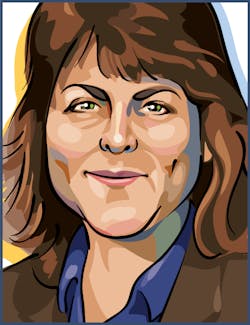
Many of my close friends and colleagues are aware by now that on May 6, 2014, my husband was in a rollover car accident that broke his neck and severely damaged his spinal cord at the C3/C4 vertebra. Paralyzed shoulders down, he is making some progress and has some muscles firing in his legs. Unfortunately, as I've learned, spinal cord injury (SCI) patients must undergo a long healing process. It took my husband about a month to learn to breath on his own, another month to fight off the non-stop fevers and infections, and now at three months, he is just beginning to exhibit some movement; however, there is no guarantee he will regain any significant function.
For the past ten years, I've been amazed at how medical technology has advanced and as an editor at Laser Focus World, I am proud to be able to write about the role of photonics in the medical community (see also the myriad of articles at http://www.bioopticsworld.com). And yet, I'm disappointed that in 2014, the use of lasers for spinal cord injury repair and healing is still an R&D effort.
Back in 2009, I wrote about low-level light therapy (LLLT) and its use in dermatological, wound healing, pain mitigation, and aesthetic applications. Five years later, only a handful of LED-based 800 to 900 nm infrared (determined as a beneficial healing wavelength) and FDA-approved medical devices are available. One such device from IR Therapies (http://www.nirtherapy.com) has 30 880 nm LEDs that deliver around 3 W of energy, as well as 650 nm red LEDs for topical healing. At about $800 it is a bargain; unfortunately, its use for spinal cord injury has not been proven or tested, and such high powers can actually be damaging to tissues.
Several of the papers I've read and people I've corresponded with say that laser diodes--and not LEDs--are more beneficial for spinal cord injury. Take a look at these studies using laser diodes for spinal cord repair in rats and dogs:
http://www.ncbi.nlm.nih.gov/pubmed/24030687
http://veterinarypage.vetmed.ufl.edu/2011/09/19/laser-treatment-helps-dogs-with-spinal-cord-injury/
http://www.thorlaser.com/media/media-archives/Spinal-Cord-Injury.htm
The last link from Thor Laser is encouraging; however, what is discouraging is that this research was done in 2005 and again, 9 years later, we are no closer to using lasers for spinal cord injury repair. If someone reads this blog and can recommend some lasers to use along with the proper fluence levels and duration of treatment, I would be thrilled! I have two 830 nm laser diodes graciously loaned to me by Coherent at my disposal; however, all the hospitals I have been in will not allow me to use them because their use for spinal cord injury is not FDA-approved. So I feel I've gone back to square one in my quest to improve my husband's condition, and photonics has become quite personal for me.
YouTube also has a wealth of encouraging videos; much of the data is for newly transected spinal cords and the ability of lasers to repair axons and recover function. Here is a recent video:
And this encouraging story from ABC News (from three months ago; UCLA research):
Of all the things in life that we use lasers for, I'm now beginning to understand why so much money and effort is being pumped into medical uses. We are an aging population, and good health really is the key to happiness. Unfortunately research goes where the money is and spinal cord injury is not a common malady. More money is spent on developing drugs like ambien and lyrica (and my personal favorite, gabapentin) that patients need to take for the rest of their lives. But now I digress.......time to head back to the hospital and begin another day, and time to look again for SCI clinical trials at clinicaltrials.gov. Perhaps there will be a cure for spinal cord inury within my husband's lifetime. I can dream.

Gail Overton | Senior Editor (2004-2020)
Gail has more than 30 years of engineering, marketing, product management, and editorial experience in the photonics and optical communications industry. Before joining the staff at Laser Focus World in 2004, she held many product management and product marketing roles in the fiber-optics industry, most notably at Hughes (El Segundo, CA), GTE Labs (Waltham, MA), Corning (Corning, NY), Photon Kinetics (Beaverton, OR), and Newport Corporation (Irvine, CA). During her marketing career, Gail published articles in WDM Solutions and Sensors magazine and traveled internationally to conduct product and sales training. Gail received her BS degree in physics, with an emphasis in optics, from San Diego State University in San Diego, CA in May 1986.